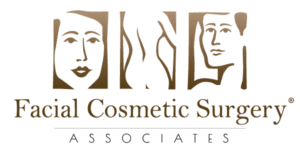Many of us notice that as we get older the skin of the upper eyelids begins to droop, obstructing the natural eyelid crease. We also notice the lower eyelids become progressively more puffy, along with the development of fine wrinkles and increasing laxity of the eyelid skin. These changes often have the effect of making one appear drowsy or tired. The eyes may feel more easily fatigued by the weight of the drooping skin and occasionally even interfere with one’s vision.
The upper and lower eyelids may contain wrinkles, loose skin and bulges due either to hereditary factors or the aging process. Pouches or bags of the upper and lower eyelids are generally due to herniations of the fat normally located in the eye socket. These fatty hernias may be removed along with excess skin in the eyelid plastic surgery procedure known as blepharoplasty. This condition is often first seen in the 20-30 year age group, sometimes younger, and can often be corrected at that time. There is little rationale to wait for some arbitrary age before having surgery. When the problem exists, it should be corrected.
Upper lid surgery is usually done at the same time as lower lid surgery, but either can be done as an isolated procedure. Upper and lower eyelid plastic surgery may be done alone or in conjunction with face lift, brow lift or other surgery.
At times the curtain of skin hanging from the upper eyelid may be partially due to sagging of the eyebrows. In such cases, it may be necessary to advice elevation and support to those structures at the same time the upper lid plastic surgery is performed.
In the upper lid blepharoplasty a determination is made about the excess or overlapping skin, which frequently obliterates the natural skin crease above the lashes. After the area has been anesthetized the excess skin and fat are removed and the incision site closed with delicate sutures.
The lower eyelid procedure is performed by making an incision either below the lower lashes and elevating the skin so that the fatty pouches or “hernias” can be identified or through an incision on the inside of the eyelid. Once the fatty pouches are removed the excess skin is trimmed. Small delicate sutures are used to close the lower lid incisions.
For most patients, there is little or no pain in the post-operative period. Each operation is followed by varying degrees of swelling and discoloration most of which usually subsides within 7-10 days. By this time, too, the incision line can be camouflaged by make-up. These incision lines gradually blend in with the surrounding skin and, after several months have passed, generally become perceptible only upon close scrutiny.
As a rule, the operation is associated with minor disability and allows one to return to routine living after a few days using cosmetics and sunglasses.
We frequently recommend a light peeling or laser treatment to tighten the skin and improve fine wrinkles or “crow’s feet.” This can be done at the time of the surgery or a few weeks later. The healing period is 10-14 days with a peeling or laser resurfacing procedure.
Eyelid surgery done for proper indications can be a rewarding experience providing a more youthful appearance to the eyes, as well as, a welcome relief to some symptoms caused by the excess fat and skin that has accumulated.
For more information on Eyelid Surgery please call 916-571-0597 or visit our website.
